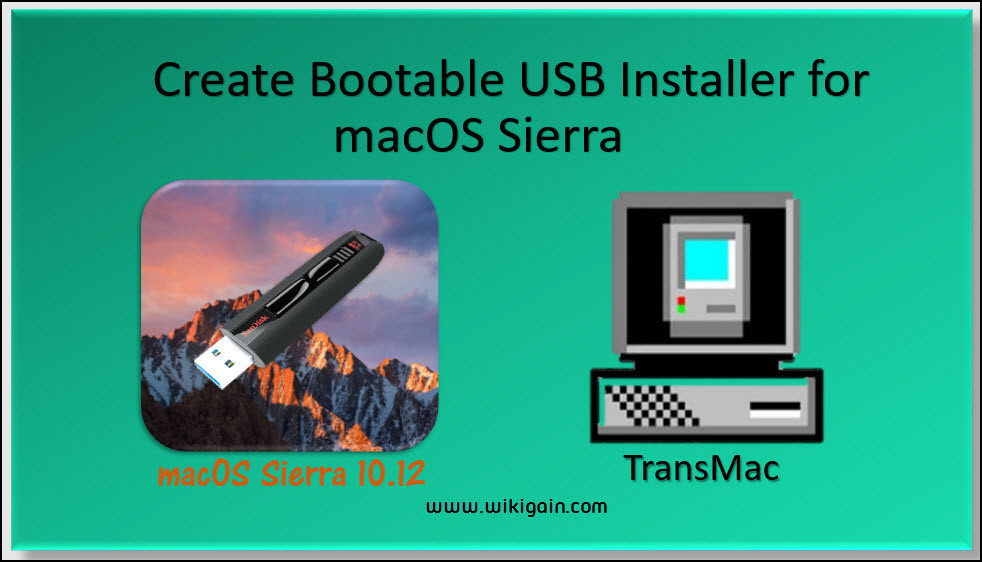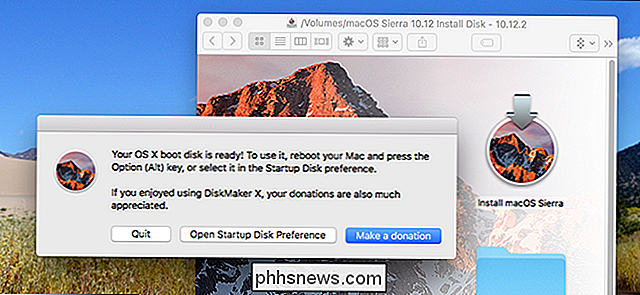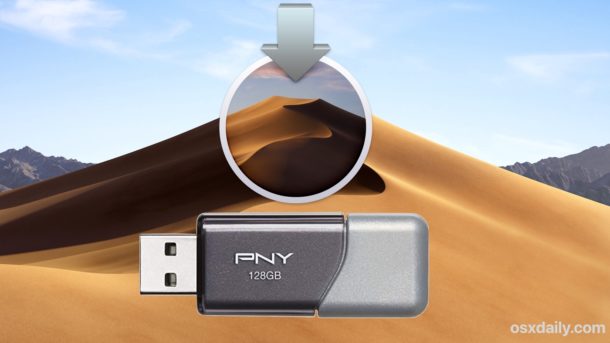Did you try updating to macOS High Sierra? If you did, you might have found a small 19mb online installer named “Install macOS High Sierra.app” inside your /Applications folder. Now I hate the online installers, especially when the real files is around 5GB. If you have a slow internet connection, then it can be frustrating. And with this installer, you cannot create an offline bootable USB to install macOS High Sierra to install in other machines quickly. So this post is about “How to Download Full High Sierra Installer to Create Bootable USB?”.
Contents
A USB flash drive or other secondary volume formatted as Mac OS Extended, with at least 14GB of available storage A downloaded installer for macOS Big Sur, Catalina, Mojave, High Sierra, or El Capitan. On the off chance, the user needs to create a Windows 7 bootable USB drive with a 4GB drive. Be that as it may, on the off chance that you need to make a bootable drive of Windows 8, Windows 8.1 or Windows 10, then it’s imperative for you to get an 8GB USB drive. In this article, we’ll demonstrate how you can create a bootable install drive for macOS High Sierra. Download DiskMaker X 7. Clicking the link above downloads a copy of DiskMaker X 7 to your Mac. DiskMaker X is free of charge, but you can help support a useful utility by sending the developers a donation. Install DiskMaker X 7. To create a bootable macOS High Sierra USB installer, you need a USB 2.0 or USB 3.0 drive with a capacity of at least 8GB. Creating the installer will erase all data on the USB drive, so make sure.
These are the instructions to follow to create your bootable USB - note there will be tiny adjustments depending on the installer you require: Plug in an external drive with at least 15GB space as.
- 2 Clean Install macOS High Sierra using a Bootable USB
How to Download Full High Sierra Installer?
You can quickly get the full 5GB macOS Sierra Installer. Just follow the steps given below. Here we will be using a third party application named High Sierra patcher application.
- First click on this link and download the High Sierra patcher application.
- The above link will give you a file named macOS High Sierra Patcher.dmg.
- Simply open this file and you will see a new window.
- Now again open the icon named macOS High Sierra Patcher inside the window.
- It will again open the macOS High Sierra Patcher. Here just go to Tools->Download macOS High Sierra… as shown in the below image.
Download Full High Sierra Installer
- It will ask you to select a location to save the macOS Sierra Installer. Select the location and it will start downloading. The file size is more than 5GB is it may take a long time depending on your internet speed.
Clean Install macOS High Sierra using a Bootable USB
Sometimes we need a clean installation of our operating system. But doing it the Apple’s way that is online can frustrate us like hell.
So what you can do is you can download a full installer, and then you can create a bootable USB.
We know how to get a full installer, and now you might be interested in knowing how to create a bootable USB right?
Creating a bootable USB is again very simple, just follow the below steps.
The Extremely Easy Way
Teamviewer os x download. We have a simple utility called Install Disk Creator. It is absolutely free and you can quickly create bootable USB by using it.
- Get the Install Disk Creator.
- Once you get the Install Disk Creator, just open it, and you will see the window as shown in the below image. Here you need to select the Installer file that we already downloaded. After choosing the Installer just click on Create Installer and it will do the task for you.
- Make sure you use a USB Drive of size of atleast 12GB.
The Easy Way
- Open terminal (command + space, write terminal and hit enter).
- Now write the following command.

- Don’t forget changing path to installer with your installer path that you downloaded and USB Volume Name with the name of the USB Drive that you are using.
So I hope you got the answer that How to Download Full High Sierra Installer to Create Bootable USB? For any queries and questions just leave your comments. And also SHARE this post if you found it useful. Thank You 🙂
Related
Create Windows 7 Bootable Usb On Mac High Sierra
These advanced steps are primarily for system administrators and others who are familiar with the command line. You don't need a bootable installer to upgrade macOS or reinstall macOS, but it can be useful when you want to install on multiple computers without downloading the installer each time.
What you need to create a bootable installer
- A USB flash drive or other secondary volume formatted as Mac OS Extended, with at least 14GB of available storage
- A downloaded installer for macOS Big Sur, Catalina, Mojave, High Sierra, or El Capitan
Download macOS
- Download: macOS Big Sur, macOS Catalina, macOS Mojave, or macOS High Sierra
These download to your Applications folder as an app named Install macOS [version name]. If the installer opens after downloading, quit it without continuing installation. To get the correct installer, download from a Mac that is using macOS Sierra 10.12.5 or later, or El Capitan 10.11.6. Enterprise administrators, please download from Apple, not a locally hosted software-update server. - Download: OS X El Capitan
This downloads as a disk image named InstallMacOSX.dmg. On a Mac that is compatible with El Capitan, open the disk image and run the installer within, named InstallMacOSX.pkg. It installs an app named Install OS X El Capitan into your Applications folder. You will create the bootable installer from this app, not from the disk image or .pkg installer.
Use the 'createinstallmedia' command in Terminal

- Connect the USB flash drive or other volume that you're using for the bootable installer.
- Open Terminal, which is in the Utilities folder of your Applications folder.
- Type or paste one of the following commands in Terminal. These assume that the installer is in your Applications folder, and MyVolume is the name of the USB flash drive or other volume you're using. If it has a different name, replace
MyVolumein these commands with the name of your volume.
Big Sur:*
Catalina:*
Mojave:*
High Sierra:*
El Capitan:
* If your Mac is using macOS Sierra or earlier, include the --applicationpath argument and installer path, similar to the way this is done in the command for El Capitan.
After typing the command:
- Press Return to enter the command.
- When prompted, type your administrator password and press Return again. Terminal doesn't show any characters as you type your password.
- When prompted, type
Yto confirm that you want to erase the volume, then press Return. Terminal shows the progress as the volume is erased. - After the volume is erased, you may see an alert that Terminal would like to access files on a removable volume. Click OK to allow the copy to proceed.
- When Terminal says that it's done, the volume will have the same name as the installer you downloaded, such as Install macOS Big Sur. You can now quit Terminal and eject the volume.
Use the bootable installer
Determine whether you're using a Mac with Apple silicon, then follow the appropriate steps:
Apple silicon
- Plug the bootable installer into a Mac that is connected to the internet and compatible with the version of macOS you're installing.
- Turn on your Mac and continue to hold the power button until you see the startup options window, which shows your bootable volumes and a gear icon labled Options.
- Select the volume containing the bootable installer, then click Continue.
- When the macOS installer opens, follow the onscreen instructions.

Intel processor
- Plug the bootable installer into a Mac that is connected to the internet and compatible with the version of macOS you're installing.
- Press and hold the Option (Alt) ⌥ key immediately after turning on or restarting your Mac.
- Release the Option key when you see a dark screen showing your bootable volumes.
- Select the volume containing the bootable installer. Then click the up arrow or press Return.
If you can't start up from the bootable installer, make sure that the External Boot setting in Startup Security Utility is set to allow booting from external media. - Choose your language, if prompted.
- Select Install macOS (or Install OS X) from the Utilities window, then click Continue and follow the onscreen instructions.
Learn more
For more information about the createinstallmedia command and the arguments that you can use with it, make sure that the macOS installer is in your Applications folder, then enter the appropriate path in Terminal:
- Big Sur: /Applications/Install macOS Big Sur.app/Contents/Resources/createinstallmedia
- Catalina: /Applications/Install macOS Catalina.app/Contents/Resources/createinstallmedia
- Mojave: /Applications/Install macOS Mojave.app/Contents/Resources/createinstallmedia
- High Sierra: /Applications/Install macOS High Sierra.app/Contents/Resources/createinstallmedia
- El Capitan: /Applications/Install OS X El Capitan.app/Contents/Resources/createinstallmedia
Create A Bootable Usb Drive Mac High Sierra Usb
A bootable installer doesn't download macOS from the internet, but it does require an internet connection to get firmware and other information specific to the Mac model.
